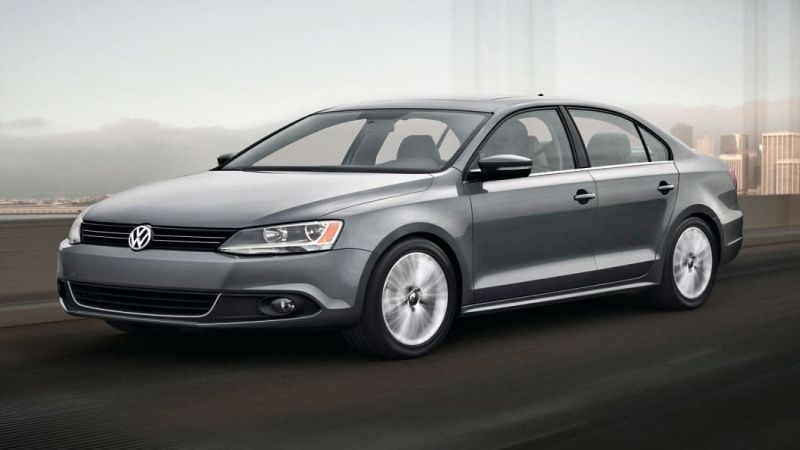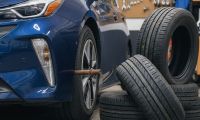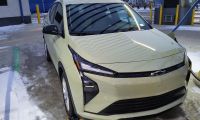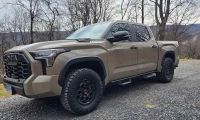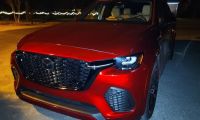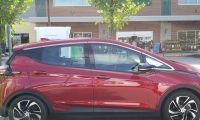It never fails to happen. Every New Year, publications – web or print, makes no difference – crank out their lists of best stories, worst stories, top stories and bottom stories. Torque News is no different. Here’s one Torque News reporter’s view on the 10 big car stories of 2016.
- Dieselgate: Volkswagen’s self-inflicted emissions scandal finally seems to be winding down, however, at one point this year, it seemed that every day new revelations were coming out that threatened the automaker. This hasn’t been an easy scandal for VW to weather especially when the news broke that their engineers knew about, planned, approved and installed the cheating devices that kept VW vehicles in the clear. So far, the scandal has cost the automaker more than $17 billion; credibility, and reputation. There could be substantial new costs coming as the racketeering probe in the U.S. comes to a head, as well as a criminal probe by the Department of Justice. Look for this to be settled before the inauguration in January.
- Takata and its exploding airbags: It was hard to determine whether this one should have been one or two. We chose two because Takata is complying with National Highway Traffic Safety Administration (NHTSA) orders quickly. At times in the past, the airbag manufacturer did knowingly drag its feet and may even have destroyed testing results, but that piece of business ended with NHTSA fines and other actions. Actually a scandal, the results of the exploding airbag inflator affair may bring the company down as it is considering bankruptcy. So far, 16 drivers have been killed worldwide and 184 seriously injured. By the time this record recall is finished in 2023 or so, it is likely 80 million devices in about 50 million cars will be recalled in the U.S. Worldwide the figures are likely to be 100 million devices in 80 million cars or so. Having been fined a record amount already by NHTSA, Takata’s fortunes may be taking another huge hit in 2017 as they face penalties in the $1 billion range. At the moment, the airbag manufacturer is trying to decide whose offer is best Daicel or Autoliv.
- Fiat Chrysler Autos:What’s up with FCA? More than 1.1 million Jeeps were nailed for poor transmission performance and ultimately recalled due to a shifter issue that unfortunately claimed the life of popular young actor Anton Yelchin, who played Chekov in the rebooted “Star Trek” series. And, another 1.9 million FCA vehicles (cars, trucks and SUVs) were recalled for airbag and seatbelt issues. Plus, another 224,000 vehicles were recalled for airbag issues, as well. And, another 200,000 vehicles were recalled for fuel leaks and wiper woes, among other things. These are only some of the many recalls facing the automaker. And, Consumer Reports didn’t have many nice things to say about its used models, either. This certainly hasn’t been the year of Fiat Chrysler Autos.
- Distracted driving:NHTSA, which declared war on distracted driving a couple of years ago, continued their attack on the problem as they sought industry and public comment on the issue. The agency also began a huge public relations push to remind people that texting and driving don't mix. And, they reminded drivers that distracted driving kills. Of the more than 35,000 traffic deaths last year, the agency estimated that about 3,200 of them were caused, in one way or another, by distracted driving, whether it was texting, cell phone or other electronic system use.
- Autonomous vehicles:It seems that this was the year when autonomous vehicles came out of lab and into the mainstream. Though the movement began about the middle of 2013 with the first indications that Google was doing some heavy-lifting with its Googlemobiles in open-road testing and continued just below the surface in 2015. This year saw its emergence in a big way as automaker after automaker jumped on the autonomous train with announcements that they would be coming out with self-driving cars by 2020 or earlier. In addition, Uber is planning to integrate self-driving cars in cities around the world, essentially providing non-routed microbus-style services. Volkswagen, among others, has climbed aboard the autonomy bus as well with its purchase of part of Hubject, the establishment of MOIA, its e-mobility division and its purchase of PayByPhone, a leading parking payment processing company. Volvo is also planning a autonomous test run of more than 30 miles in Sweden for XC90s. There is more to come.
- Trump takes presidency:Despite all of the surprise over Donald Trump's election as president, he takes office on Jan. 20, Inauguration Day. One of Trump's biggest deals throughout his campaign was his promise to stop the job drain and bring jobs back to the U.S. He touted his skills at in the former when he claimed that he was able to convince Carrier Corp. to keep 700 jobs in the U.S. But, what was the cost to keep them here? There were reports of millions in tax incentives, among other things. And, what wasn't noted at the time was that about 1,200 jobs were still headed south of the border anyway, where it is much less expensive to manufacture things like air conditioners, heat pumps and cars. Trump did warn the automotive industry about moving jobs out of the country to plants in Mexico and elsewhere. Apparently he thought he was on the side of the angels with this one, as he pitched a fit at NAFTA and other trade agreements that he alleged were wrecking the economy (it's hard to see how this is happening, in the first place, as jobs are now at an all-time high, unemployment is still low and real wages are climbing – all of which are exactly opposite of the view the president-elect espouses) and which he promised to halt, his first day or two in office. What he didn't realize or could it have been because it was counter his vision of the economy was that U.S. manufacturers were adding jobs here as plants were being changed over to produce more crossovers and pickups. Even some of the imported makers with plants here, like Volkswagen, have added jobs and have made huge investments here. Perhaps it might be a good idea for the president-elect to back off a bit, take a look at things and take a more guarded tone. Another area where Trump made promises is in fuel economy standards. He pledged to roll them back. However, that is an outcome that will now be rather hard to do as they were made rulemakings and published in the Federal Register. Once there – even given a 30-day implementation delay – they have the force of law on Jan. 20. Once they have the strength of law, a president cannot just roll them back with the stroke of a pen. They have to be repealed by another rulemaking which usually takes a bit of time to accomplish.
- Toyota kills Scion:What began with a lot of fanfare in 2003 rather quietly ended this year as Toyota killed the Scion brand. The automaker launched the brand just after the turn of the century to capture young drivers. They were believed, at the time, to be turned off to new cars and driving, though they were turned onto computers and electronics. Seeing that, Toyota decided to create a brand that appealed to them. It worked for the first few years as Scion peaked in 2009. Funnily, Scions appealed to Gen-Xers and Boomers. After that point, sales tailed away to their low point last year. Toyota, seeing the brand fade, killed off the slower-selling names and merged a couple of lines with the parent nameplate. It is interesting that a brand created to attract Millennial drivers faded away, while there is major interest from younger buyers in vehicles like crossovers and electrics. They are also interested in autonomous driving. That interested is expected to fuel sales of autonomous vehicles and technology.
- Electric vehicle sales lighting up:The arrival of the Chevy Bolt and the promise of the demand for Tesla’s Model 3 have helped to spur interest and sales of electric vehicles. Sales had been flat, except at the high end, because gasoline prices have been down due to the continuing glut of fuel. A recent decision by OPEC (Organization of Petroleum Exporting Countries) to cut back production has spurred a rise in crude oil futures which indicates there may be a modest price rise soon (aside from normal winter pricing adjustment as the petroleum industry makes winter-blended fuels) will likely only spur interest in alternative fuel vehicles including electrics. With that said, though, the key breakthroughs that are making electric vehicles real are technologies that increase mileage, as well as batteries that can handled 200-300 mile cruising ranges. The last figure seems to be the trigger for increasing electric sales. As soon as consumers realize the electrics no long have puny ranges in the 80-mile region and now offer range that approaches standard fuel cars more consumers are expected to make the switch. Though prices have been high, they are expected to fall, especially as more of them are sold. Also, electrics seem to be naturals as autonomous vehicles and with the industry’s push toward autonomy it is only seems natural that more electrics will be sold. Finally, thanks to the Dieselgate scandal, VW is retooling it marketing strategy to provide up to 30 electric models by 2025. Their ambitious planning puts sales in the 3 million per year range. This, alone, will guarantee that electrics do spark off.
- Hacking still a threat:As has been shown by major hacks on FCA and Tesla vehicles, automakers are facing some real problems. Slow to tighten their own network security – and apparently hoping that the usual routine for keeping things secret is silence – automakers are finding their vehicles are vulnerable to hack attacks via infotainment and related networks. The hacks have been rather limited and low level. The well-known attacks have been conducted by white hat hackers who have been working with the automakers involved. These researchers have found the vulnerabilities and have shown them to the automakers, whose responsibilities now are to engineer vehicles that are more hack-proof. Tesla has already responded to research that showed their vehicles hackable at up to 12 miles via a combination of cell-based and infotainment technology with a software patch. FCA has responded as well to the research showing its Jeeps as vulnerable. The point here, though, is that vehicles can still be hacked and that can pose problems for drivers all over if there is a major hack attack. Of course, the auto industry isn’t going to discuss the changes they have made or security measures they have taken. However, the rumor mill has still been very quiet – too quiet, it seems – on what the auto industry is doing right now to keep vehicles hack-proof. If the industry is still responding with its head-in-the-ground, silence attitude, then it could be playing into the hands of hackers.
- Vehicle to vehicle comms:Recently there has been news of industry and government efforts to increase vehicle-to-vehicle (V2V) communications in the 5.9 GHz region of spectrum. The Federal Communications Commission has set aside 75 MHz of spectrum for mobile safety systems that would allow automakers to deploy vehicles that employ technology that would enable vehicles to “talk” with one another to improve safety. The local, low-powered over-the-air networks would improve safety by letting each vehicle in an area know where others are and to set up protection against crashes. Indeed, the networks could be set up automatically so that a vehicle’s path through an intersection is handled completely by networked systems talking with one another. They would set safe distances to vehicles around, watch for pedestrians – keeping them safe – while guiding vehicles past other cars, traffic lights and other obstacles. One fly in the ointment, so to speak, is the fact that the spectrum allocated to mobile safety systems is also being sought by other network providers who believe their needs supplant mobile safety systems. If this isn’t done correctly and competing systems are allowed to use the same spectrum as cars, then it could be a nightmare.


